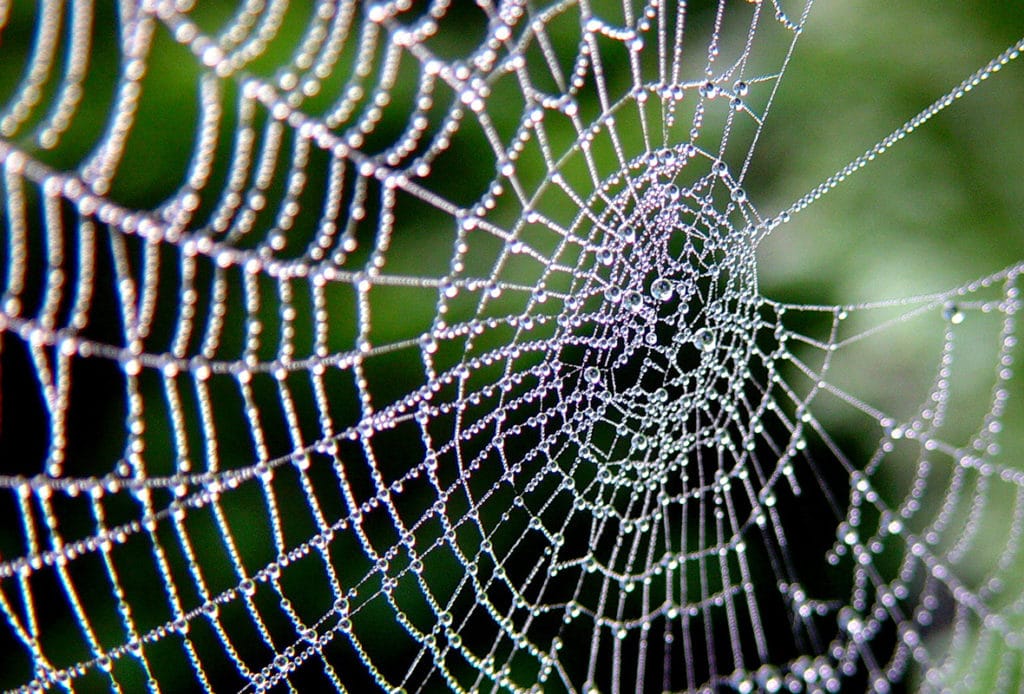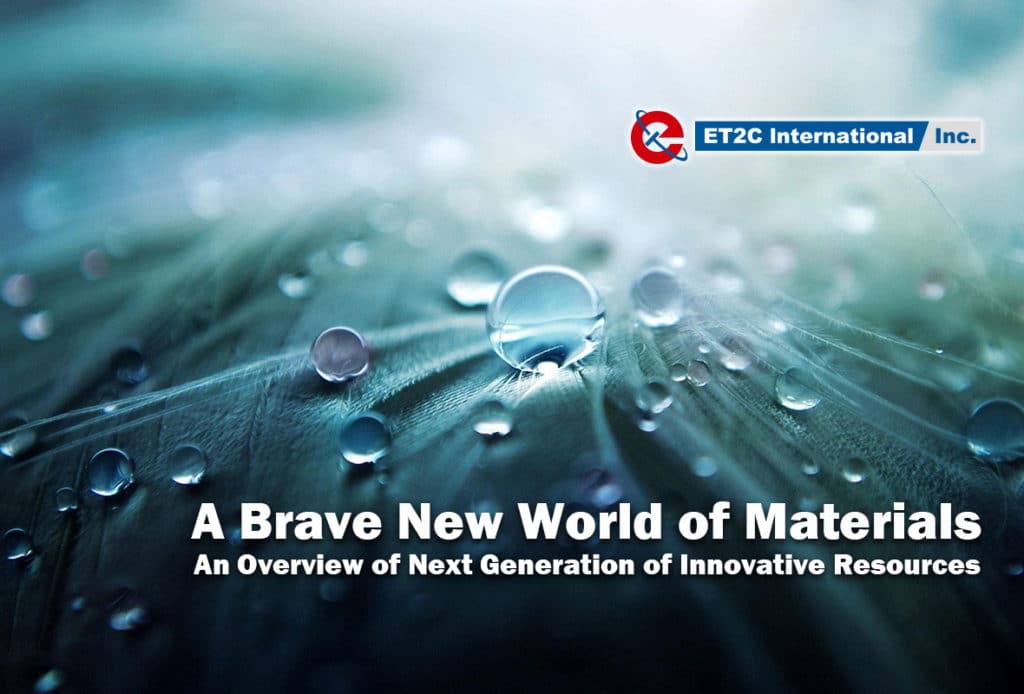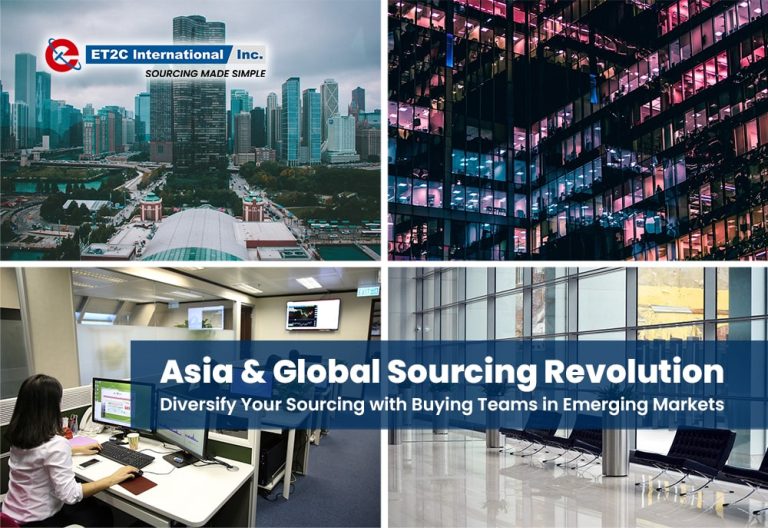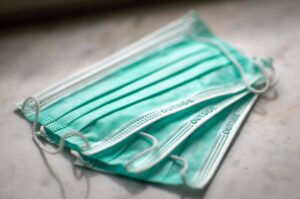Spiders. Simply the name of these eight-legged arthropods may be enough to cause some to stop reading here. Their terrifying fangs, pitch-black eyes, and intricate webs have earned them a spot as a quintessential horror troupe. However, what if instead of putting up fake spider webs to scare trick-or-treaters during Halloween, we wear them instead? That’s right. Bio-engineers at multiple apparel companies, including the popular The North Face, are now using synthetic spider silk in their manufacturing process. But why would anyone in their right mind, let alone engineers at one of the top clothing companies in the world, encourage people to wear what essentially is a bunch of spider webs?
As it turns out, the synthetic spider silk is “light, supple, stretchy, and stronger than steel,” according to an article appearing in Popular Science (Grushkin, 2015). These strengths have justified its use in all sorts of fields, including bulletproof vests, wound dressings, and car materials. The utilization of spider webs is just one example of new and innovative materials that have started to make their way into everyday products such as clothes, building materials food, and more.

Innovative materials, raw ingredients used in production that deviate from the norm, are now more popular than ever. The Industrial Technologies division of the European Commission’s Research and Innovation branch estimates that 70% of all new product innovation is based on materials with new or improved properties (Sheppard, 2012).
But why are companies so eager to adopt these unfamiliar materials? As a matter of fact, there are many explanations as to why companies utilize these innovative materials. For starters, the use of most innovative materials often decreases energy-related costs, which is a prime concern for many manufacturers. Subsequently, there are also many tax incentives for pursuing these more sustainable production methods, on both and state levels in the US and through local governments in other regions (Lagas, 2015).
The macroeconomic benefits of using these materials offer an explanation as to why governments are encouraging these new practices. According to the American Chemical Association, advanced and innovative materials can “support more efficient and sustainable manufacturing practices… reduce dependence on imported oil… lower the burden of CO2 management and improve energy supply security, sustainability, and competitiveness” (American Chemical Society, 2015). These are just some of the many reasons for companies to jump into the new world of innovative materials.
How Companies are Using Innovative Materials
Innovative materials offer a vast variety of benefits, but what exactly are companies doing to integrate these exciting new materials into their supply chains? What new products are being developed with the newfangled materials? The answer is broad and covers a vast ranges of industries and sectors. Here are some more exciting examples of these new materials in action.
Ministry of Supply
Most people are familiar with the range of products for running. However, you may be surprised to hear of someone running a half-marathon in an hour and seventeen minutes wearing a full suit. Josh Whitehead did exactly that while wearing one of the Ministry of Supply’s three-piece Aviator II suits.
While still an impressive feat, the material of the suit may have provided some assistance to Whitehead. The suit is made from warp-knitted breathable poly, which allows the suit to be “breathable, waterproof, moisture wicking, and odor controlling.” In the words of the CEO of the Ministry of Supply, “This suit isn’t designed for running in, but the fact that it can be done is great” (Ducharme, 2016).
Adidas X Parley
There is a lot of plastic in the sea. Unfortunately, the amount keeps rising by an estimated eight million metric tons every year. By 2050, it is estimated that there will be more plastic in the ocean than fish, giving a sense of urgency to this problem (EarthDay Network, 2018). However, this has also caused some companies, like Adidas, to realize an opportunity for incorporating new resources into their supply chain while also doing their part to protect our oceans.
Adidas and Parley have partnered up to manufacture shoes out of sea plastic. Parley, an ocean conservation movement, collects plastic from beaches to send to Adidas to be manufactured into stylish and well-fitting shoes. Not only is Adidas able to save money by having their raw materials donated by Parley, but they’re also able to use the material of the shoes to target the rising segment population of environmentally-concerned customers. Adidas have also recently committed to using only recycled polyester in all of its shoes and clothing with the next six years to increase the sustainability of its supply chain.

Other Examples of Innovative Materials
While these two examples of companies using innovative materials are inspiring, it is also important to keep in mind the vast number of advanced materials making their way into supply chains are doing so a bit more silently. Even though these materials are not as publicized, they still have a huge impact on the companies that utilize them and the customers who buy the products.
Ultra-Strength Concrete
From 2012 to 2015, China used more cement than the US has in the entire 20th century (Swanson, 2015). This rapid growth has led to concerns about the oftentimes inversely-correlated relationship between quality and quantity, leading to many construction entities looking for alternative materials. Enter the new Ultra-strength concrete. This new kind of concrete changes the contents of cement using mathematical modeling procedures, allowing for a 40% reduction in the density of the water film and a more durable and sustainable form of concrete.
Neptune Balls
Neptune Balls, or Sea Balls, are made of the foliage of a sea-grass species called Posidonia Oceanica. The waste of these plants tends to roll up into small, sphere-shaped objects, oftentimes washing up on shores across the world. The material, however, has been recognized by some manufacturers as an innovative and renewable resource for textiles. It can also be used in its raw form as an insulating material with natural fire prevention properties. The Neptune Balls are a bit of a miracle product of nature as well, since they do not rot, contain no salts or proteins, and are not harmful in any way to humans.
Fungus-Based Materials
While most people are at least familiar with fungus on an appearance level, the study of Mycology (the study of fungi) is still being pioneered in many regards. Because Mycology is relatively immature, new discoveries about the uses of these strange organisms are being made every day. One of these new uses is to produce hard foams naturally through the same processes the thread-shaped mycelium of fungi use to colonize wood, soil and other materials found nature. Essentially, the fungi create a system of very small threads that bind to various organic waste materials. These threads could be used as a reinforcing material in both construction and textile production, providing a cost-effective and natural way to develop products (Sheppard, 2012).

Integrating Innovative Materials into Supply Chains
Even while innovative materials are extremely beneficial for both the planet and the manufacturer, they don’t simply appear out of thin air. There are processes that companies undertake in order to enter into the brave new world of innovative materials.
Some of these processes include employing “green” or sustainable initiatives to keep the company on the cutting edge of technology while also showing respect for Mother Nature. Some common processes companies adopt include upgrading facilities to rid of energy-wasting processes of production, streamlining their supply chains and employee networks, and hiring “green” professionals, such as environmental economists and engineers, to help them eliminate some of the externalities that had to their total cost (Ryan, 2018).

These initiatives led to a global movement of sustainable sourcing. One of the massive corporations participating in this movement is Unilever. Unilever states that its sustainable sourcing techniques have allowed them to “secure our supplies and reduce risk and volatility in our raw material supply chains,” while also “open[ing] up opportunities for innovation” (Unilever, 2018).
Companies are not always making the leap alone. Some NGOs, like the WWF, are helping companies trace products along the supply and distribution networks, measuring the impacts along the way. The information the WWF provides allows for companies to realize areas in their products that may be creating unnecessary expenses, allowing for them to explore potentially groundbreaking solutions.
In the words of the founder of Magnifeco, an online source that covers eco-fashion, “Buying isn’t the problem. Making isn’t the problem. Innovation is our way out [of wasting materials].” Eco-friendly and innovative materials not only adds value to a product but oftentimes it also saves the company from wasting valuable resources in the production process. As more and more of these new materials are incorporated into supply chains across industries around the world, industry and trade can become an asset to environmental protection efforts rather than a detriment.
Summary
Companies are opening up to using innovative materials in different ways. They bring a new range of characteristics and applications that will only go on to enhance the product experience. Whether it is textiles with enhanced properties, or materials that aid sustainability or the re-thinking of building materials like concrete, which the Romans had invented some 2,000 years ago, these are all good developments. Humans continue to evolve and with that evolution comes advances in the materials we use. Sometimes though, it is no bad thing to look at some of what Mother Nature has created and to take note, even if it may be hard for those arachnophobes.
At ET2C, we are dedicated to making a difference and understanding the development and commerciality of new materials is key to this. We have already utilized blended fibres (bamboo and Milk) in some of our babywear ranges and recycled plastic on sneakers (part of a sustainability drive). There is a lot of new materials being developed from resins, polymers, activated carbon, the use of recycled materials through to textiles. Our focus is understanding these attributes and, importantly, the application in mass production ensuring that there is the required level of commerciality. Sustainability also forms part of this piece of work, and utilizing materials in a way that can aide this initiative can only have a positive impact.
If you have any questions on any of the above, or ideas, please do not hesitate to contact us.










